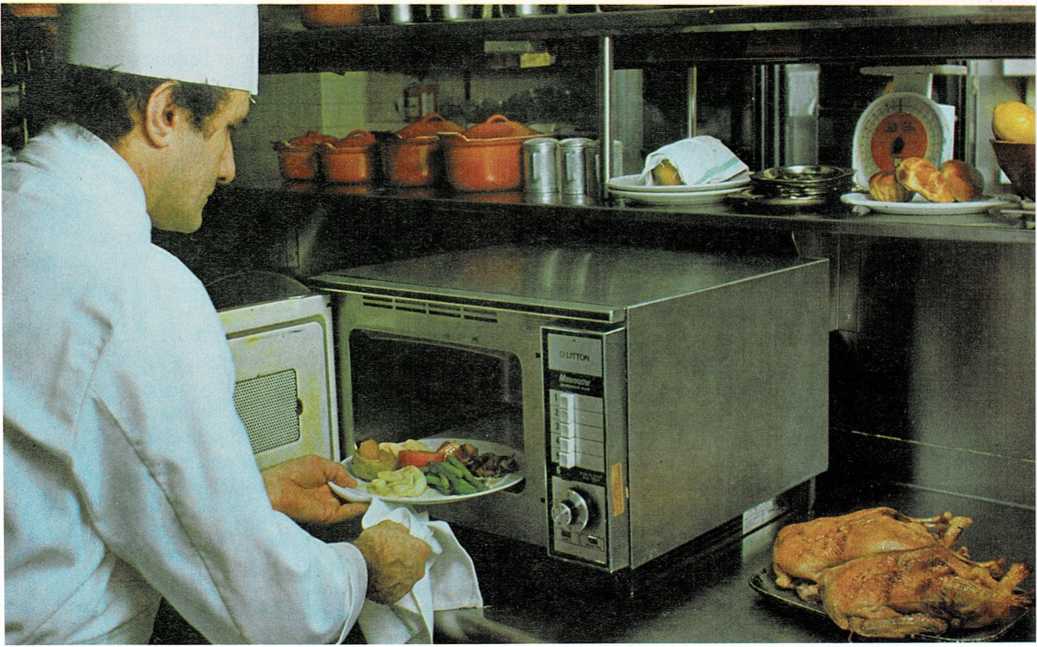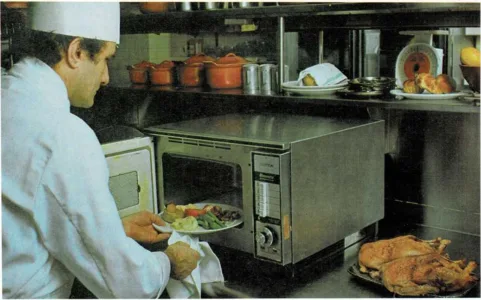An oven that stays cool
Could you bake a potato in an oven that doesn’t get hot? Yes, you could,
if it’s a microwave oven. In minutes, the potato gets steaming hot, but
the oven stays cool! And the glass or china dishes you cook in stay
cool, too.
Micro- means \”small.” And that’s what microwaves are—small radio
waves. These waves are so short that they easily penetrate
[(pehn]{.smallcaps} uh trayt), or pass into, all kinds of foods.
When the oven is turned on, a special electric tube begins sending out
microwaves. On their way into the oven, the microwaves pass through a
stirrer, which is like an electric fan. The stirrer scatters the waves,
so that they bounce off the metal walls of the oven.
The bouncing microwaves penetrate the food from all directions and make
the food molecules move faster and faster. The moving molecules create
friction, and the friction produces heat. So the food in the oven warms
up immediately, inside and out. In a short time, it’s cooked all the way
through.
In an ordinary oven, food is heated from the outside. The heat has to
move into the food. Because microwaves create heat inside the food, a
microwave oven cooks food much

Foods cook fast in microwave ovens. In a busy restaurant, a meal is
hot and ready to serve in minutes.
faster than a gas or electric oven. So a microwave oven saves time. It
bakes a potato in a few minutes instead of an hour—and it heats a hot
dog in seconds!
But microwaves can’t do some of the things heat can do. They can’t make
foods crisp or crusty or brown on the outside. So for sizzling meat,
crusty bread, and crisp cookies, people use a gas or electric oven that
cooks with heat. Or, they use a microwave oven with a special heater. It
heats up for a short time and \”toasts” the food after the microwaves
have cooked it through.

